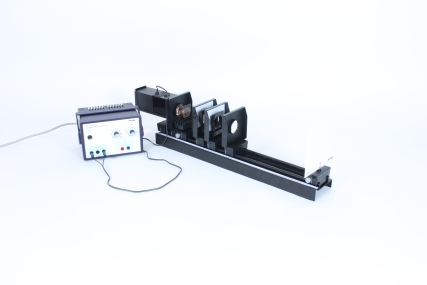
|
|
|||||||||||||||||||||||||||||||||
|
Technical data Chromatic polarisationArticle no: P1197000

Principle Most conventional plastic films retain lasting inherent tensions
from the stretching or rolling processes they undergo during
manufacture. These tensions renderthem optically anisotropic.
Hence, the Iight velocity in such foils is dependent an direction,
i.e., a light beam striking the surface of such materials is split
into two parts known as the ordinary and the extraordinary ray. lf
such foils are positioned between two polarization filters,
coloured images appear in the visual field behind the analyzer, in
which the colours and their intensity are dependent on the mutual
angle of rotation of the polarization filters, on the stretch
direction of the foils and on their layer thickness. This is the learning objective of the experiment. The students
should also realize - with the aid of the film specimen (comp. Fig.
2) - that the two components, into which the incident natural light
is split, are polarized in a mutually perpendicular plane and have
symmetrically arranged, complementary colours. Benefits
Tasks Insert transparent film into the space between two crossed polarization filters and investigate the phenomena which occur when, either the foil, or one of the filters is rotated. Scope of delivery
|
|||||||||||||||||||||||||||||||||
|
|
Robert-Bosch-Breite 10 – 37079 Göttingen – Germany
www.phywe.com

